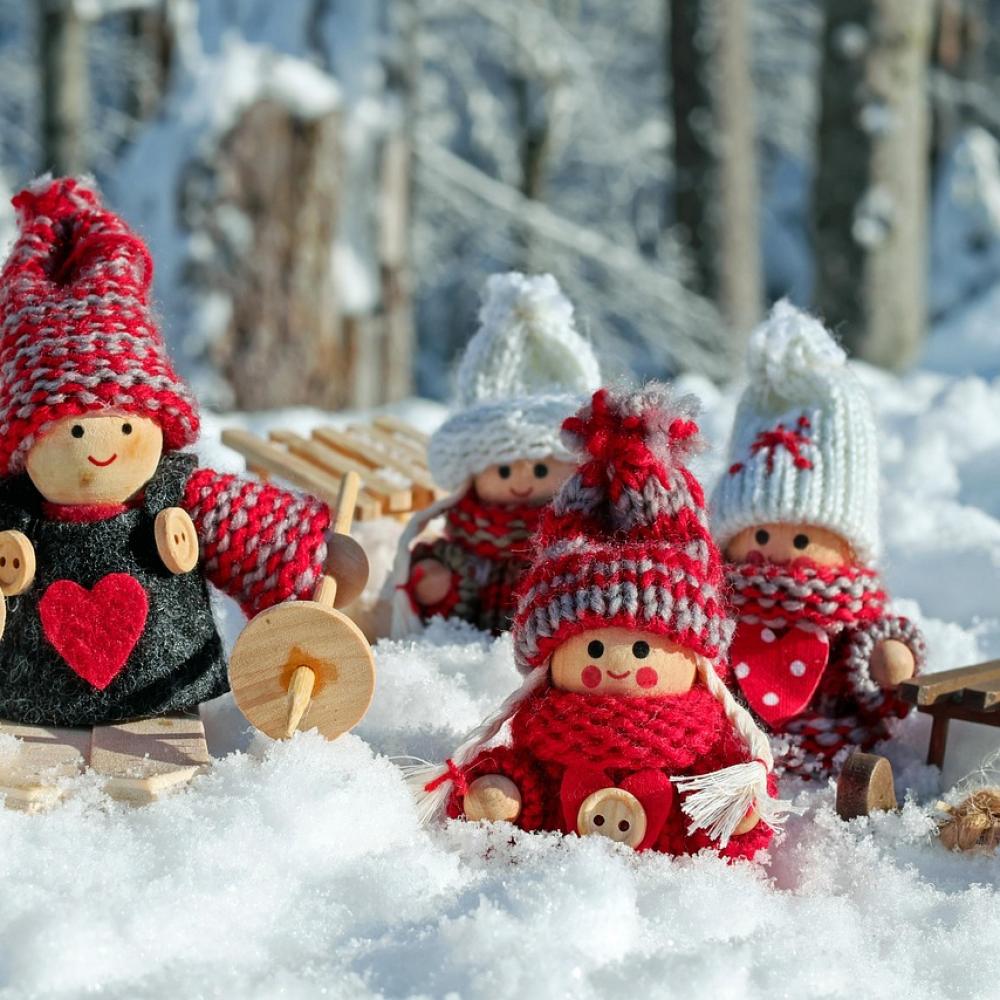
February Allotment Jobs
February Allotment Tips
- Avoid planting out too early due to the risk of frosts
- Sow seeds indoors/under glass
- Potato chitting
- Fruit tree planting and pruning
What to grow in February
These be sown directly outdoors dependent on location and it's climate:
- Shallots
- Garlic
- Early carrots
- Early lettuce
- Early Peas
- Jerusalem Artichokes
- Broad beans
You can sow indoors in a warm and light position:
February allotment jobs can be tricky, depending on your location. Allotments located in the southern UK often get a head start with their sowing schedule. However, those in the northern parts of the country may need to wait for a few more weeks.
While February’s weather can be troublesome, especially in cooler locations, there are still a few vegetables you can comfortably sow both indoors and outdoors.
In fact, February is also the perfect time to complete all your maintenance jobs, making sure you’re ready for the upcoming growing season.
What’s Possible in February - Allotment Overview
The average temperature in February, in the UK, is typically around 7°C. In some regions, it can drop as low as 1°C. This means that even if the soil gets warmer, there’s still a risk of late frost.
To prevent that, we recommend planting frost-hardy variants outdoors if your region’s microclimate allows that.
For those living in much colder areas or wanting to get a head start for spring, February is the ideal month to start planting indoors in a greenhouse or using warm propagators.
Note: Quite often, growers start their seeds too soon, and it results in them having to start again. So make sure you get your timings right.
Beyond initial sowing, there are plenty of other February allotment jobs that you can get done this month, like pruning fruit trees and planting new ones, especially raspberries and canes.
If you’re still confused about what to sow in February, you can sow broad beans, garlic, shallots, and rhubarb in warmer areas.
To start your seeds, sow early varieties of lettuce and carrots in greenhouses or polytunnels, or keep them covered with cloches. You can also sow peas the same way, however tomatoes and chillies require a heated propagator.
Depending on the variety and your location, parsnips are one of the best plants to grow in February, but it may still be too early or cold for them in some areas. Since they have a long germination period, it might be worth sowing a few to see how they respond and proceed accordingly.
Indoor seeds need light and warmth, along with careful watering. If you’re using lidded seed trays, open the vents when they’re in a sunny spot to stop excess heat from building up. You can also provide your seeds with extra light using a lamp or by reflecting light with tin foil to prevent weak seedlings.
You may have also waited until this month to chit your potatoes. In cooler climates, February is often a better time for chitting than earlier in the winter. If you want to learn more about Potato Chitting, click here.
February Allotment Jobs Checklist
While planning what to plant in February, you can also focus on structural projects, cleaning and clearing jobs, and preparing soil and beds.
Here is everything you can do this month in anticipation of the upcoming growing season:
Soil and Plot Maintenance
Keep adding mulch to shady or wet areas, and remove any decomposing vegetables and rogue potatoes from last season to help prevent the spread of diseases. You can also mulch around fruit trees and bushes, including raspberries, currants and gooseberries.
We recommend removing any overwintering brassicas or potatoes left in the ground around this time. As the weather gets warmer, dormant pests (like hibernating insects) and fungal diseases (such as blight and clubroot) can become active.
Removing these old crops is essential to prevent them from transferring infection or infestations to your new crops in the upcoming growing season.
Harvest Any Existing Overwintering Crops
Now for the best part of all your hard work on the allotment - Harvesting! You can still lift healthy overwintered crops from the ground, such as parsnips, swede, leeks, and brassicas like kale and cabbage.
Be sure to check any stored crops for regrowth, damage, or decay.
Forcing Rhubarb
If you want an early harvest of rhubarb, you can 'trick' the plant by placing a large pot or bin over the crown, allowing it to grow in the dark. Make sure to insulate the vessel or container you are using to retain heat.
However, this method does have a disadvantage. The crowns can become weak and depleted of energy, so they may not produce again and could remain dormant for a couple of years.
Start Chitting Potatoes
Before deciding what to grow in February, start with potato chitting. This encourages the seeds to sprout before being planted in the soil, allowing for an earlier and more successful harvest.
Place seed potatoes in a cool yet frost-free location, like a windowsill, where the average temperature is around 10°C. By the time the soil warms in March, you should see sturdy green shoots ready for planting.
Prepare Seedbeds Undercover
To be ready for the sowing season, preparing seedbeds undercover is one of the most important February allotment jobs. The soil is still cold and hard, but you can artificially raise its temperature by covering it with a horticulture cloche, fleece, or polythene. It is best to choose a location that receives maximum sunlight and drains well.
In about 2-3 weeks, the soil should be warm enough to plant early varieties of peas, spinach, and radish.
Prune Apple and Pear Trees
Winter pruning is integral to healthy and sturdy fruit trees, such as apples and pears. Winter pruning is suited for pome fruits and not stone fruits, as this increases their susceptibility to silver leaf disease.
Start by removing dead or diseased branches. If branches are overcrowded, strategically prune them to improve air circulation and allow better light penetration. An open goblet shape is typically best suited for fruit trees.
Sow Early Variant Crops Undercover
If you’re wondering what to sow in February, this is the perfect time to get an early start on growing vegetables and herbs. However, you will need access to a greenhouse, cold frame, or propagator to extend the growing season and secure an early harvest.
Some popular crops that can benefit from early sowing in February include broad beans, peas, lettuce, spinach, radish, beetroot, onions, early carrots, and brassicas. You can also plant herbs like parsley and chives.
February sowing is only suitable in areas with an average temperature of 10–15°C. Always use seed compost rather than directly in the soil to prevent overwatering.
Order Seeds and Supplies
One of the most important February allotment jobs, especially in colder regions, is to be prepared for the upcoming growing season. Once the weather is warm, your hands will be full with sowing, growing, harvesting, and weeding.
Place your orders for seeds, seed trays, compost, pots, labels and canes beforehand. Wash any pots and containers from last season to remove traces of any lurking pests or diseases.
February Calendar for Allotment Growers
February 1st-10th: Chit potatoes and prune fruit trees
February 11th-20th: Sow under cover
February 21st-28th: Sow indoors tomatoes and chillies, and plant shallots
What to Sow Now vs What to Plant Now
You can sow outdoors in the UK in February, but only when the weather is mild enough. Using covers can make a significant difference as well. Plug plants or seedlings should only be transplanted into their final positions if your region has a reliably warm microclimate.
Here are some plants that you can sow in February indoors or undercover outdoors:
- Broad beans
- Parsnips
- Peas
- Onions and shallots
- Aubergines
- Chillies and peppers
- Tomatoes
- Beetroot
- Radish
- Lettuce
- Spinach
- Rocket
The best plants to grow in February, if the soil is warm and the weather conditions permit, include:
- Garlic cloves
- Bare-root fruit bushes and trees
It is best to keep plants protected during the night using covers. In colder regions, sowing in a greenhouse or indoors in containers is usually the safest option, with transplanting left for when the weather becomes warmer.
Growing in Containers, Small Spaces, and Indoors
February allotment growing is a grey area and extremely weather-dependent. At Allotment Online, we understand how frustrating it can feel while other growers are already getting started. The good news is that you can still grow plants indoors in containers and small spaces.
Here are some plants you can grow in containers:
- Get a head start on tomatoes, chillies and aubergines. However, growing these plants indoors is not an easy feat, and you would need a heated propagator to maintain the optimal temperature for germination.
- You can grow herbs on a sunny windowsill, including parsley, chives, basil, and dill. Some other herbs like mint, rosemary, thyme and oregano can be planted indoors or in a greenhouse, but would need to be transplanted as soon as possible.
Precautions for Container and Indoor Growing in February
- Place plants in south-facing windows to give them regular sunlight, and rotate them regularly to ensure even light exposure. On overcast days, supplement with a grow light.
- If you’re keeping plants indoors using a propagator or grow light, avoid overheating. Maintain an average temperature of 20°C for optimal growth and germination.
- The indoor climate should be well-ventilated to prevent fungal diseases due to increased humidity.
- Use tepid water sparingly. Using cold water leads to shocking roots, while waterlogging leads to root rot.
- Keep an eye out for fungus gnats, aphids, and mould.
Our February Grow-Your-Own Starter Kit
February is a transition period between winter and spring. This is the time to get prepped for the very active growing season that lies ahead of you. Our grow-your-own starter kit is the ultimate guide to help you stay on top of February allotment jobs.
Here’s everything you need to start in February to ensure a healthy and thriving allotment across the year:
- Get seed trays and containers, and place an order for the seeds you plan to sow, along with labels (to avoid mixing up aubergines with tomatoes)
- Keep ample cloches and fleeces on hand, as outdoor plants need protection from fluctuating temperatures
- A propagator or heat mat is useful for gardeners in northern UK, as it allows you to get an early start to the sowing season
- Multipurpose compost provides a more effective medium for indoor growing compared to soil
- Get seed potatoes for chitting
- Plan your allotment space for spring-sowing, including crop rotation, companion planting, and cover crops
Common Problems and How to Avoid Them
The weather conditions in February can be quite unpredictable, which can create challenges for allotment growers. Here’s a guide to the most common problems you may face and practical ways to deal with them.
Frost
Frost is common during this month, with an average of 17 grass frost days, and it can be extremely detrimental to plant growth. Tender plants and young seedlings can wilt, their stems may become mushy, and they may even die.
In milder regions, protect your plants with cloches, while in colder areas, keep them indoors or in greenhouses.
Soggy Soil
February is among the wettest months in the UK, and if you have clay or poor-draining soil in your allotment, it becomes waterlogged. It is a good idea to till the soil to break the compact particles. Adding mulch and compost will also help improve soil quality while promoting better drainage.
Raised beds aid with drainage further, and in high rainfall areas, using containers or keeping plants indoors can be very effective.
Seed Rot
Seed rot is a common problem that allotment growers face in February due to low sunlight and inadequate germination conditions.
Use well-drained compost instead of planting directly in the soil, as this reduces the risk of seed rot. Starting seeds and plug plants indoors or in containers can help too.
Low Light
Although daytime hours increase in February, some areas still receive limited sunlight. If this affects your growing schedule, you can use an LED grow light to compensate.
Tools & Techniques for February Success
Before you get started with the best plants to grow in February, consider equipping yourself with the right plot tools and techniques for a successful growing season first. Here is everything you need:
- Pruning shears
- Container and seed trays
- Fleece
- Cloches
- Propagator
- Mulch and compost
FAQs for February Allotments
Can I start sowing tomatoes now?
Yes, tomatoes can be sown during February. However, it is a good idea to start them indoors, while properly regulating the temperature. Tomatoes require a temperature of 18–21°C and may need supplementary lighting with an LED grow light.
Is it too late to plant bare-root fruit?
February is almost the end of planting bare-root fruit. Some bare-root fruits that you can grow in the UK include apples, plums, pears, cherries, red, black and white currants, and raspberries.
Should I chit potatoes in February?
Yes, February is the ideal time for potato chitting, so they are ready for March planting. Early varieties of potatoes require six weeks before they can be planted in the soil.
What veg crops can I sow outdoors?
Some of the best veg crops to grow in February include broad beans, peas, and garlic. However, they need additional protection, so consider using horticulture fleece or cloches to protect seedlings and tender plants from frost.
How do I stop seeds from rotting?
Allotment growers in the UK often face waterlogging during February, which leads to seed rotting and root damage. Use free-draining compost and consider growing crops in containers to prevent that from happening. Also, avoid overwatering to keep your plants healthy and thriving.
Start Your Allotment Growing Journey and Share Your Experience with the Community
Are you excited about your allotment growing journey? At Allotment Online, we act as your guide for helping you with all things related to growing your own vegetables, fruits and herbs. Do you have a story or photos that you want to share with fellow growers? You can share your stories and suggestions with us in our comments and socials.
Visit our website for more information and tips regarding allotment growing, suitable for both amateur and experienced growers. If you are excited to start on your allotment journey, you can check our directory for the nearest allotment association.
Go to March Allotment Jobs




